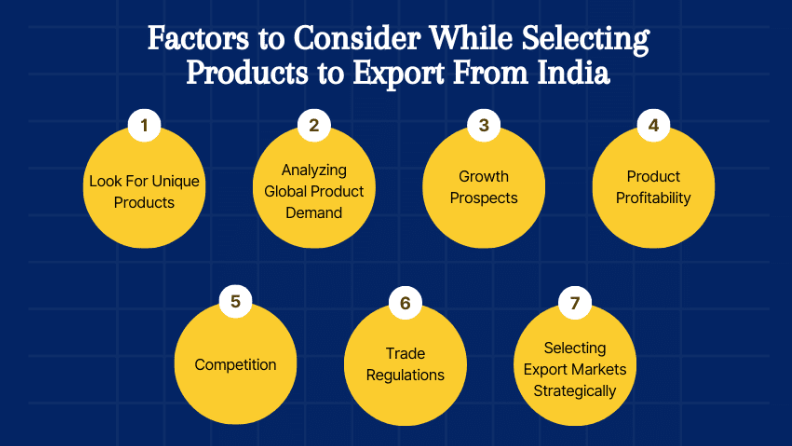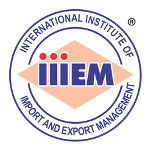Selecting the right product is the foundation of a successful export venture from India. With India’s vast manufacturing base, agricultural diversity, and skilled workforce, exporters have access to thousands of potential products — but not every product suits every market.
The right product choice determines your market entry strategy, pricing competitiveness, profitability, and long-term sustainability in international trade.
A carefully chosen export product aligns with global demand trends, leverages India’s production strengths, complies with international quality standards, and ensures consistent supply and margins.
Product selection is not just a starting step — it is a strategic decision that defines the future growth and success of any export business.
Step-by-Step Guide: Selecting a Product for Exports from India
- Identify Broad Product Categories
Start by choosing an industry or product segment where India has strong production and export potential, such as:
- Agro & Food Products: Spices, rice, tea, coffee, fruits, vegetables, processed foods.
- Textiles & Garments: Cotton, home textiles, apparel, yarn.
- Engineering Goods: Auto parts, machinery, tools.
- Pharmaceuticals: Generic medicines, Ayurvedic products.
- Handicrafts & Lifestyle: Handloom, wooden crafts, leather goods.
- Chemicals & Plastics: Organic chemicals, dyes, plastic granules, packaging materials.
- Study Global Market Demand
Use reliable data sources to check what the world is importing:
- ITC Trade Map (www.trademap.org)
- Export Genius / Import Export Data Bank (DGFT, India)
- DGFT – www.commerce.gov.in
- Tridge or Statista market insights
- Look for:
- Consistent or rising import trends
- Countries with stable economies and easy trade access
- Products that India already exports successfully
- Match India’s Strengths and Supply Capacity
- Analyze whether India has competitive advantage in that product:
- Raw material availability
- Skilled labor and manufacturing infrastructure
- Cost efficiency
- Technological edge (especially in pharma, textiles, or engineering sectors)
Example: India has an edge in basmati rice, spices, leather goods, auto parts, and generic medicines.
- Evaluate Export Restrictions & Compliance
- Before finalizing, check:
- DGFT Export Policy: Whether product is Free, Restricted, or Prohibited
- Export Licensing Requirements (for food, drugs, chemicals, etc.)
- Standards/Certifications Needed:
- ISO, CE, FDA, HACCP, FSSAI, GMP, GOTS, etc.
- Country-specific regulations (EU, USFDA, etc.)
- Assess Profitability
- Calculate your Export Price Competitiveness:
- Cost of procurement/manufacturing
- Freight & logistics (FOB, CIF)
- Government incentives (RoDTEP, RoSCTL, if applicable)
- Currency exchange rate benefits
- Market price of competing countries (China, Vietnam, etc.)
- Choose a product with good margin and manageable logistics.
- Study Buyer Preferences & Product Trends
- Understand what buyers prefer:
- Design, quality, packaging, and eco-friendliness matter.
- Focus on global trends: sustainable products, organic food, biodegradable packaging, ethnic products, etc.
Example: Exporters of eco-friendly tableware (areca, sugarcane bagasse, bamboo) are growing fast.
- Start Narrow, Then Expand
- Select 1–2 focused products rather than many unrelated ones.
You can later diversify into related items (e.g., from jute bags → jute home décor → jute packaging).
- Validate Demand with Real Buyers
- Before committing:
- Check B2B portals like Alibaba, IndiaMART, TradeIndia, Tridge, Global Sources.
- Attend trade fairs (India Trade Promotion Organization – ITPO, EEPC, APEDA events).
- Connect with Export Promotion Councils (EPCH, FIEO, etc.) for product and market guidance.
- Analyze Competition
- Study what competitors are doing:
- Which countries supply similar products?
- What is their pricing, packaging, or marketing strategy?
- How can you differentiate — through quality, customization, or branding?
Selecting a Right Product is the first step towards success in International Trade

